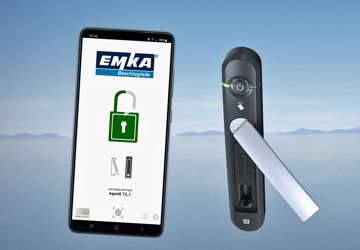

Manufacturing currently follows a series of fixed, separate stages. If machines or equipment suddenly fail, production stops - that costs time and money. Fraunhofer researchers now offer a better way with a digital twin.
Machines today produce parts in networked, pre-programmed production runs -pieces are turned, milled and measured in a set order. But what happens when a machine fails or a customer changes its order? Production has to be re-configured, which is time-consuming and expensive.
What if there was a better way? Instead of a central control program issuing commands, the workflow would develop flexibly, each part deciding for itself the best route through production. Sound like a pipe dream? To the contrary: Developers at the Fraunhofer Institute for Production Technology (IPT) in Aachen are working on such a system.
It is called ‘Service-oriented architecture for adaptive and networked production’ and functions similar to an automobile navigation system that uses current data to determine the best route in real time. Each part carries information regarding the next production stage; which machine will be called into operation is purposely left undecided. Only when a production stage is pending does the system select a machine from those that are readily available. Each part bears a QR-Code identifying it as a unique entity.
The software remembers what was done to each part at each production stage, for example, ‘Hole is drilled with machine parameter A and tool X’. A digital twin emerges from this history, displaying at any time where its physical counterpart is in the production process. Digital twins are especially valuable to manufacturers of a wide variety of goods because updating or changing a production run does not require a system overhaul.
Single parts thanks to flexible production
The ‘Smart Manufacturing Network’ manages the digital twin, always analysing and reusing its process data to improve process robustness and product quality. “Networking machines with parts will enable companies to produce one-off products in the future – production runs of one,” says Michael Kulik, project leader at Fraunhofer working on the software development.
A unique aspect of the system is the menu, which configures a production sequence. Using drag-and-drop, the user selects individual steps from a list of all services and arranges them in the desired order like building blocks. If a machine fails, a part is simply rerouted to another available machine.
“Many machines in a production line can perform a variety of tasks,” explains Kulik. “For example, a sophisticated 5-axis milling machine can also do the job of a simpler 3-axis milling machine. In the future, the Smart Manufacturing Network’s service-oriented software can flexibly decide to do the job on an idle 5-axis machine."
Also important for flexible production, machines from various manufacturers must easily integrate into the Smart Manufacturing Network. IPT is working on this with partners from science and industry in Fraunhofer’s ‘Networked, adaptive production’ performance centre. “The plug-and-play that we know from everyday technology does not yet exist in industry,” says Dr. Thomas Bobek, coordinator of the Fraunhofer performance center. “Our goal is to make plug-and-produce possible.”
Fraunhofer’s researchers will demonstrate how the digital twin, service-oriented software and Smart Manufacturing Network collaborate at HANNOVER MESSE 2017, from 24th – 28th April 2017, as part of the trade fair ‘Research & Technology’ in Hall 2 at Stand C22.

Having spent a decade in the fastener industry experiencing every facet – from steel mills, fastener manufacturers, wholesalers, distributors, as well as machinery builders and plating + coating companies, Claire has developed an in-depth knowledge of all things fasteners.
Alongside visiting numerous companies, exhibitions and conferences around the world, Claire has also interviewed high profile figures – focusing on key topics impacting the sector and making sure readers stay up to date with the latest developments within the industry.





